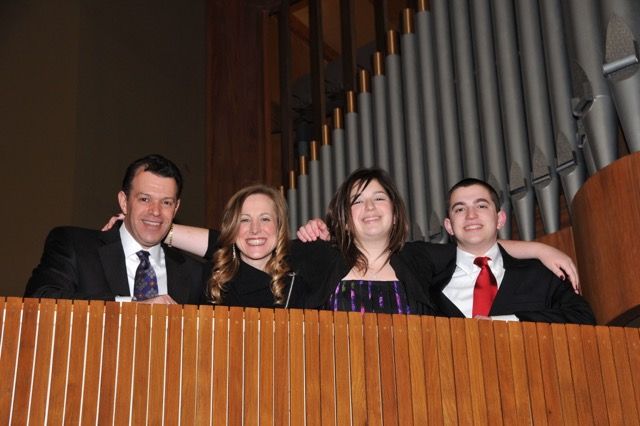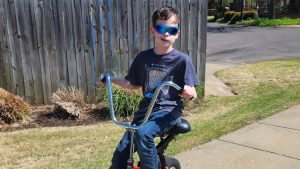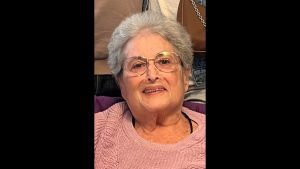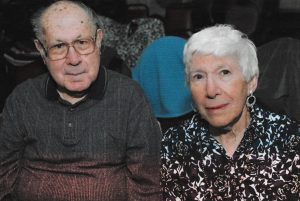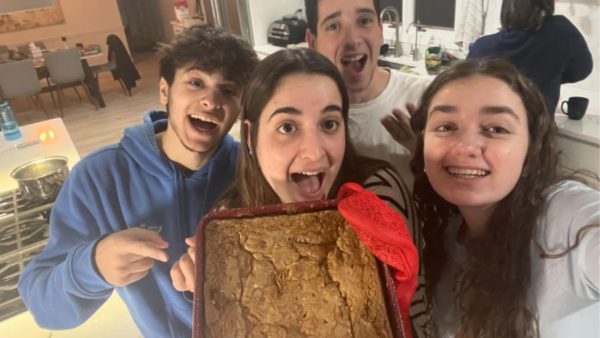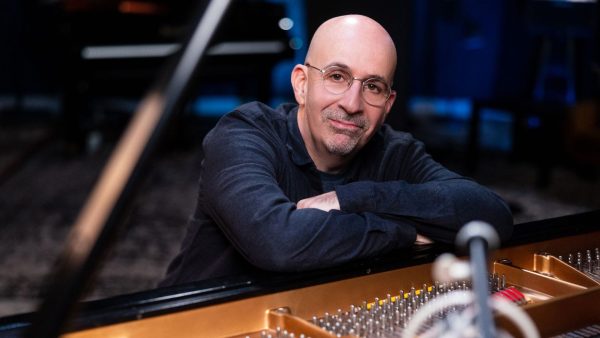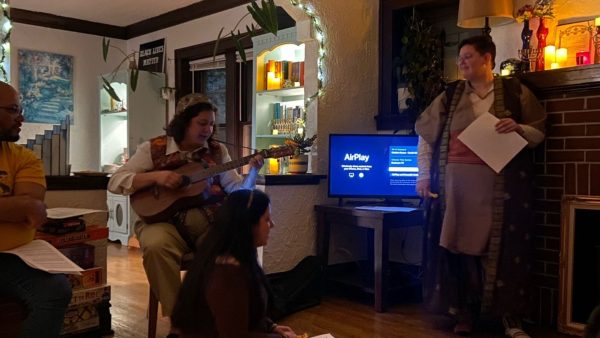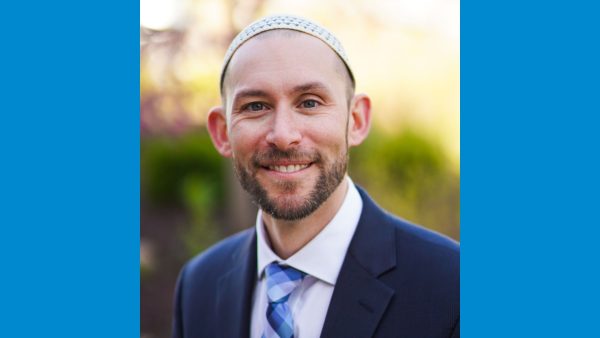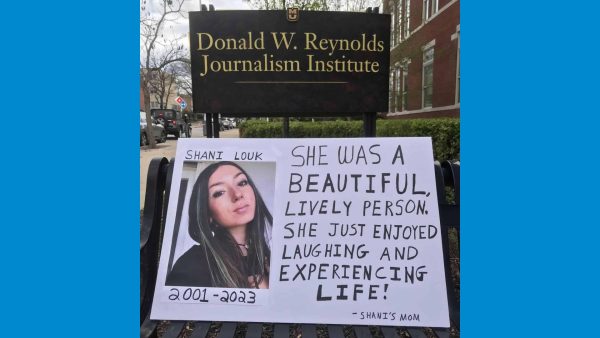Local teen’s suicide sheds light on tragedy of depression
Published September 9, 2021
Editor’s note: September is National Suicide Prevention Month. It’s also the month that 18-year-old Michael Worth took his own life in 2014, on Rosh Hashanah of that year. Since then, Michael’s parents, Amy and Brad, have formed alliances with CHADS Coalition, whose mission is to save young lives by advancing the awareness and prevention of depression and suicide. The organization is having a benefit Sept. 30th, which Amy Worth is co-chairing. For information, go to chadscoalition.org.
What follows, for today’s Throwback Thursday, is the 2015 story surrounding Michael’s suicide.
On the surface, Michael Worth seemed like a happy-go-lucky 18-year-old with lots of interests, a desire to give back and a promising future. He enjoyed playing games with young campers at the Jewish Community Center and climbing mountains in Colorado with his buddies from Camp Sabra. He felt a strong connection to his Jewish upbringing at Congregation Shaare Emeth, and even tutored younger students in Hebrew.
More than anything, Michael thrived on helping people, whether it be stocking shelves at downtown’s Food Outreach, or proudly carrying a youngster with Down syndrome high on his shoulders. He always wanted his friends to know he was there for them.
And then one day he wasn’t.
On Sept. 26, 2014, the eve of Rosh Hashanah, Michael drove to a parking garage in an office building less than a mile from his Creve Coeur home, locked himself in his Nissan Altima and turned on the engine. The next morning he was found dead, with the car still running.
What most people didn’t know about Michael is that he suffered for many years in silence from depression and anxiety. According to the National Institute of Mental Health, depression is the most common mental health problem in the United States, affecting about 17 million people. Astonishingly, half of all lifetime cases of mental illness begin at age 14. Suicide is also the third leading cause of death in young people ages 15 to 24.
Understanding these statistics, however, doesn’t make the heartbreak any less devastating for family and friends left behind. It certainly didn’t for Michael’s parents, Amy and Brad Worth, or for his younger sister, Ali. But the family is steadfast in keeping Michael’s memory alive and bringing awareness to teen suicide and mental illness. That’s why nearly six months after the tragedy, Amy and Brad agreed to talk about their beloved son and the demons he fought for much of his way-too-short life.
Amy remembers the night of his death, before the Parkway West High School senior left the house. She and Brad were hanging out at home while Michael watched a movie in another room. “Michael was acting kind of strange and quiet that night,” said Amy, 47. “He told us he was going to Steak n Shake for a milkshake. This wasn’t atypical. Sometimes he would go out for ice cream and come right back home.”
That was the last time they saw their son.
Worst fears realized
“When he didn’t come home by 9:15 p.m., we called him,” Amy continued. “He was quiet on the phone, but said, “OK,” when I asked him to come home soon. When he wasn’t home about 20 minutes later, I tried calling his phone and texting him, but he never answered, which was unusual.”
At 6 the next morning, Michael’s younger sister woke up and was told Michael never came home. She crawled into bed with her parents. Amy and Brad called their parents and siblings, who drove over.
At 11 a.m., a Creve Coeur police detective
came to the house. He was accompanied byCantor Seth Warner, who is a chaplain with the Creve Coeur Police and Fire Department, and Rabbi James Bennett from Shaare Emeth, where the Worths had been members for more than two decades. Amy started crying. The whole family knew something terrible had happened. Later that same afternoon, the detective came back with a sealed envelope containing some of Michael’s personal items, including a handwritten letter, which they couldn’t bare to read until the night before the funeral.
“We were in shock, of course, but we were not surprised,” said Amy. “Over the years, Michael must have tried 20 different anxiety and antidepressant medications and different combinations, and nothing helped him.”
When hopelessness takes over
Michael’s treatment went beyond medication. He had seen different psychologists and psychiatrists for years. Last year, Michael spent three months in a residential wilderness therapy program in Utah. Brad, 47, remembers one of Michael’s doctors telling them, “If you send Michael to a program like this, you will know that you have tried everything you could.” Brad continued, “We didn’t realize at the time how much of Michael’s behavior was related to his depression, but we don’t regret the decision we made.”
By that time, Michael took matters in his own hands. Many clinically depressed people are desperate to feel better, so they self medicate. Even though Michael was drug free, he was still willing to try anything to take away his pain.
“He would search the Internet for hours looking for the latest research and was willing to try anything to make him feel better, including various herbs and teas,” said Amy. “In fact, another package of supplements arrived in the mail shortly after he died. He must have spent over $1,000 of his own money to pay for these holistic remedies that never worked.
“For all the negative stuff he was dealing with, Michael was a very positive person. He told us if he beats this illness, he would build a health care center to help other people going through the same thing.”
On Sept. 23, a few days before he took his life, Michael tweeted, “All I’ve done today is dance around the house and jam to music. I am sooooo happy.”
“He appeared to be the happiest we had seen him in a long time,” said Amy.
But his final words handwritten on a white sheet of paper found next to him in his car, told a dramatically different story.
In part, Michael wrote, “My friends and family have supported me as much as possible, and I thank you for that. I would like you to know I did not suffer. I have looked extremely hard to find the most peaceful, painless way to die. I can’t live in this horrible world…People die for no reason and bad things happen to good people…Well, that’s life isn’t it? Life isn’t for me.”
He continued, “This was not a selfish act. I have been selfless the last decade, staying alive just for my friends and family.”
As brutally painful as it was for his parents to read their child’s suicide note, Michael’s words actually gave them some comfort even though life for their family will never be the same again.
“What helps me carry on is knowing that Michael is finally at peace,” said Amy, who wears a tattoo of Michael’s signature and his birthdate 1-17-96 on her inner right wrist. “I feel connected to him when I look at his signature.”
For a parent, there is no greater anguish than the death of a child. And when that loss is caused by suicide, the stigma that goes along with it only compounds the grief.
Part of what helps is sharing favorite photographs and stories on a Facebook page called, “In Loving Memory of Michael Worth,” which Michael’s friend, Alex Cohen, created. They also have established a fund at Camp Sabra where Michael spent many happy summers.
“We want to keep Michael’s memory alive, by being open about what happened and sharing his story with others,” said Brad. We want people to understand the impact of what this illness does to the person who has it and those they are with. The more people talk about mental illness and teen suicide the more it brings attention to it.”
The silent epidemic
Indeed, depression is considered a silent epidemic, particularly among the teenage population. According to National Alliance for the Mentally Ill (NAMI), four million children and adolescents in this country suffer from a serious mental disorder that causes significant functional impairments at home, at school and with peers.
More than 90 percent of children and adolescents who die by suicide have a mental disorder, reports the American Foundation for Suicide Prevention. The worst part is that in any given year, only 20 percent of children who need treatment for psychiatric disorders are identified and receive mental health services.
“We may be better at diagnosis but we are still lightweight when it comes to talking about mental illness and addiction and consequences, and being real with responses and activists on prevention,” said Rabbi James Stone Goodman of Congregation Neve Shalom. “We are in the midst of serious social and personal distress around the subjects of suicide, mental illness, drug addiction—some or all that intersect in the souls of vulnerable people living next door or down the block—certainly in our families and our synagogues.
“What to do, that’s always the question. Start with talk and more talk. Real talk about real problems,” Goodman continued. “We did that with drug addiction starting over 30 years ago. We need to do that with depression and suicide and the other challenges to life that dwell within . . . Don’t let anyone go dark on our watch.”
Shedding light on the darkness
When it comes to shedding light on suicide prevention, few organizations are more active than CHADS, which was founded after Marian and Larry McCord’s 18-year-old son, Chad, committed suicide in 2004.
“After Chad died, we struggled with incredible sadness and hopelessness. I have now learned to put parameters around my pain. It is a pain and sadness that we will take to our grave,” said Marian McCord, whose organization offers programs on depression awareness and suicide prevention to about 1,000 students in the St. Louis and surrounding area per week.
“At first I fought feelings of guilt, what could I or should I of done differently that could of prevented his death,” McCord explained. “Over time, it was the love of my family, my friends and my faith community that helped us find hope. We soon channeled our grief into trying to help other kids and families who have a child who struggles with depression or who have lost a child to suicide. I feel driven to make a difference. Our lives have purpose.”
In their road to healing, the Worths have joined alliances with CHADS, helping to raise money for the cause. In January, Michael’s friend Alex, along with his dad Mark, organized an ice cream social in honor of Michael’s birthday and raised more than $1,000. The Worths are also helping to plan the annual “CHADS Rock n Stroll” on May 29, at Central Park in Chesterfield, which will include a Beatles cover band, face painting, balloon making, fireworks, and food trucks.
New studies and treatment provide hope
As the discussion about mental illness gradually comes to the forefront, so does the treatment of the disease, which affects 1 in every 4 people, according to the World Health Organization.
At Washington University School of Medicine, for example, studies are underway to understand this widespread health issue that does not discriminate against race, religion, gender, economic status, or age.
“We are identifying depression earlier, and the idea is that you can actually change things more effectively the younger the child is, which is why it’s not a good idea to wait to get help. The younger the child is, the more changeable their brain is,” said Dr. Joan Luby, a child psychiatrist at Washington University School of Medicine, who is currently studying depression in children as young as three years old. “In addition, there are some new drugs being tested, new psychotherapies and new drug combinations out there, so there’s hope.”
She notes that depression is not all in the head; it tortures the body, mind, and soul.
“There’s not a physical tangible injury but psychic pain is very intense, so intense it draws people to want to commit suicide, which suggests it’s more intense than physical pain,” Luby said. “What people fail to understand about depression is how much psychic pain depressed people are in.”
Amy and Brad saw Michael in pain, firsthand. “He would point to his chest and tell us we didn’t understand the pain he felt inside. He just wanted his pain to go away, and we felt so helpless,” Amy said.
The challenge for parents is how to determine if these symptoms are a normal part of puberty, which can be highly stressful, or if there is a real medical concern.
In Luby’s medical experience, she helps parents recognize the warning signs, including irritability, pessimism, hopelessness, disengagement and the inability to recognize that the pain will subside.
Michael may have been one of an estimated five percent with severe depression who do not respond to antidepressants. For these cases there is an alternative therapy program called the Treatment Resistant Depression (TRD) clinic at Wash U’s medical school. It is dedicated to helping people with severe depression find a better quality of life.
According to Dr. Charles R. Conway, associate professor of psychiatry at the (TRD) clinic, those who suffer from TRD often have a high suicide risk, and this program is their last resort. Michael was on the waiting list to see the doctors here when he took his life.
Community helps
Since Michael’s death, the Jewish community has been a huge help to the Worth family.
“People from all different temples reached out to us, including people we didn’t even know,” said Brad. “We got donations and private messages from different rabbis in the area, too, some we barely knew at all. We were told his name was read out loud at (services) all over St. Louis.
“When we went to our temple for Kol Nidre, one week after Michael died, it was the most crowded night of the year. We felt overwhelmed by everyone wanting to offer condolences. (Congregants at ) our temple went out of their way to meet us at the door, take us to our reserved seats, and make us feel comfortable. We could not have gotten through this difficult time without the support of our friends and the Jewish community.”
On Jan. 17, Michael would have turned 19. To celebrate his birthday, family and friends worked at Food Outreach, where Michael loved to volunteer, serving those living with HIV/AIDS and cancer.”
“On Michael’s birthday, we celebrate his life, which was cut much too short, and his legacy, that will live on,” said Brad. “We want the memory of his contagious smile to brighten our day, and we want his demonstration of compassion for others on a regular basis to be an inspiration for people to think of him when they perform acts of kindness.”



